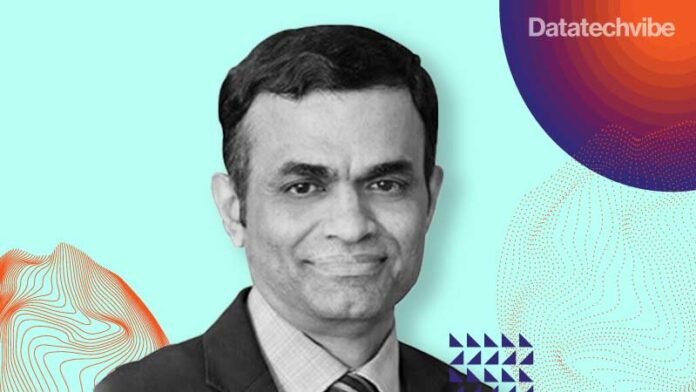Digitalisation without data is meaningless, says Ram Kumar, Chief Data and Analytics Officer at Cigna. He shares a roadmap for data leaders to drive and measure enterprise-wide digital transformation
New research that surveyed key decision-makers from European businesses found that while planning digital transformation projects that were expected to boost productivity by an average of 38% in just three years with overall Return on Investment (ROI) expected in just under 5 years – that was not the case. On average, only 15% of these organisations have completed their digital transformation projects. Almost 40% of respondents said their organisation was lagging behind competitors.
The major barriers were pegged to; employee pushback, skill gaps to lead digitisation initiatives and organisational structure.
The first step, says Ram Kumar, Chief Data and Analytics Officer at Cigna, is establishing the inextricable link between data and digital. “Digitalisation without data is meaningless. A real digital strategy must be data-led. It must examine the role of data intensely – whether that’s data about customers, interactions, channels, product and service use, business processes, or knowledge-sharing,” he says.
A real digital strategy must consider how data is collected, what its value is, how it can be used, the importance of provenance and quality, how to organise it so it’s easy to explore and analyse, and most importantly, the insights it provides can drive innovation and competitive advantage.
“Data is the lifeblood of digital, and it brings intelligence to digital.”
Organisations that struggle with becoming data-driven are also likely to struggle with digital business transformation. What’s holding back your enterprises’ success?
Data leaders play a critical role
As data is a key component of digital data-driven insights and provide the intelligence to digital that can drive innovation and competitive advantage. Data leaders can help measure the success of the enterprise-wide digital transformation.
Kumar makes the following suggestions for data leaders;
- The data team should be part of any digital initiative right from conceptualisation of the initiative as that would help design the solution to be data-led by considering various data lifecycle components, which include privacy, data quality, analytics, etc.
- Define key performance indicators/metrics to measure the performance of enterprise-wide digital transformation efforts by capturing key data points required at various stages of the program and ensure alignment with the strategic goals of the program. It is critical to measure and monitor the KPIs and manage any risks proactively.
- Communicate the measured KPIs and recommendations to the stakeholders in a timely and open manner. This could be done as part of the programme governance framework or separately.
- Use the KPIs measured and any data-driven analysis done to drive a continuous improvement mindset that would only improve the programme on an ongoing basis.
Building your tech stack
When it comes to building solutions for your technology stack, include, Kumar says, “Selecting and investing in technology should not be the first step in any initiative or project or programme. Today’s technology is tomorrow’s legacy. So, it is important to manage the technology investment process. Else, it will create technical debt and vendor lock, which in turn will increase the operational costs.”
Kumar’s key considerations when investing or building solutions for your technology stack.
- Have a clear understanding of the business goals, objectives, priorities, requirements, and outcomes to be achieved.
- Have clarity on the functional and non-functional requirements of the business to achieve the outcomes. Non-functional includes scalability, performance, security, data quality, data interoperability and integration, etc.
- Develop an end-to-end architecture that covers the various aspects of the architecture – business, application, data, infrastructure, security, integration (how different components would integrate to achieve interoperability of data), and governance of architecture to manage change. This will provide an end-to-end view of the solution landscape. Having this view will help in investing in the right technologies and tools required to implement the architecture and to manage change in the future.
- Based on the architecture, identify the core components of the solution that is mandatory and that cannot be compromised. The core components are foundational building blocks and should be independent of changes to technology components, thereby preventing vendor lock-in. e.g., data models and data-oriented microservices that are reusable.
- Based on the architecture, determine the technologies and tools required to invest. Before investing in new technology, apply the principle of reuse before buying before building. The last thing one needs to consider is building a technology component, as over a period of time, it will become expensive and hard to maintain. Look at leveraging existing technologies if they fit the requirements.
- Consider post-solution deployment requirements in terms of support such as level of support, vendor support, and staff support, type of support such as time zone, hours of support, etc.
- Be very clear about cost impact, which includes capital and operational costs.
For more information and registration, visit Velocity UAE.









